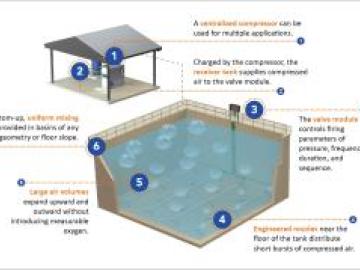Improved Aeration Efficiency through Design and Control
With the recent and future increases of the cost of energy, operating a wastewater treatment plant (WWTP) as efficiently as possible has become one of the most important factors that operators and managers are facing today. The implementation of a properly designed aeration control system has been reported by the United Sates Environmental Protection Agency to reduce aeration energy by 25 to 40 percent.



